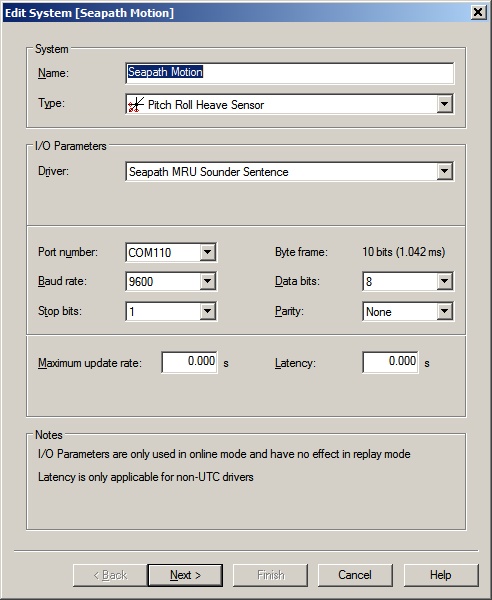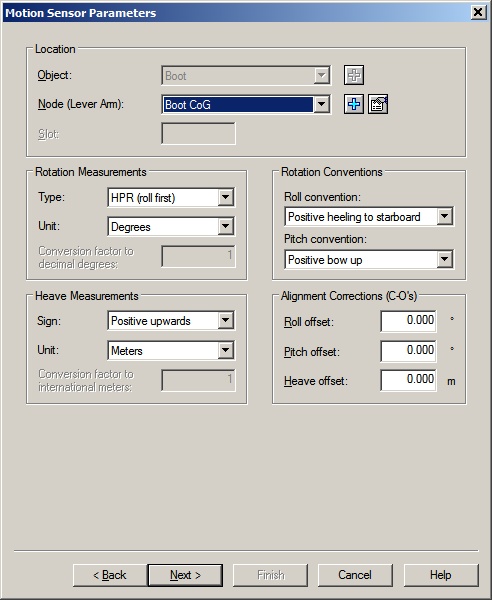Network - Seapath MRU Sounder Sentence (UDP) - 03
Description
Driver to be used to decode roll-pitch-heave observations from a Seapath (or MRU) motion reference unit outputting so-called Sounder Sentence ASCII messages.
- No heading observation is part of the message, only roll, pitch and heave.
- There are three versions of this driver, a serial one, a network UDP and a network TCP version. Decoding is the same for all.
- When your motion reference unit outputs the NMEA $PSXN format, please use the driver as found in the related pages.
Driver Information
| Driver | Seapath MRU Sounder Sentence | Interface Type | Serial | Driver Class Type | Terminated <LF> |
|---|---|---|---|---|---|
| UTC Driver | No | Input / Output | Input | Executable | DrvQPSTerminatedTCP.exe SEAPATH_SOUNDER |
| Related Systems |
| ||||
| Related Pages | Seapath MRU NMEA (PSXN) - 03 Network - Seapath MRU NMEA (PSXN) (UDP) - 03 Network - Seapath MRU NMEA (PSXN) (TCP) - 03 | ||||
Database Setup
- In order to decode the motion, add to your template setup a Pitch Roll Heave Sensor system and select driver
"Seapath MRU Sounder Sentence" or "Network (UDP/TCP) - Seapath MRU Sounder Sentence" for the network variant.
Fill in the correct I/O parameters and press Next to go to the next wizard page.

Leave the settings at the defaults on the Motion Sensor Parameters page:
Unit: Degrees, Roll convention: Positive heeling to starboard, Pitch convention: Positive bow up and Heave Sign: Positive upwards.
The driver automatically converts the decoded values to these conventions.
Decoding Notes
- There is no quality information in the Sounder Sentence message about the observations, except for a warning character at column 14: Normally a space character, but when data is unstable it will be a '?' character.
Qinsy will not use data which is marked as unstable. When this happens the observation quality indicators will be -1.0 instead of 0.0. Note that these quality indicators can be monitored using an Observation Physics Display. - There is no time information inside the message, so timing of the observation will be at time-of-arrival.
- The driver will automatically convert the decoded values to the default Qinsy convention and unit.
